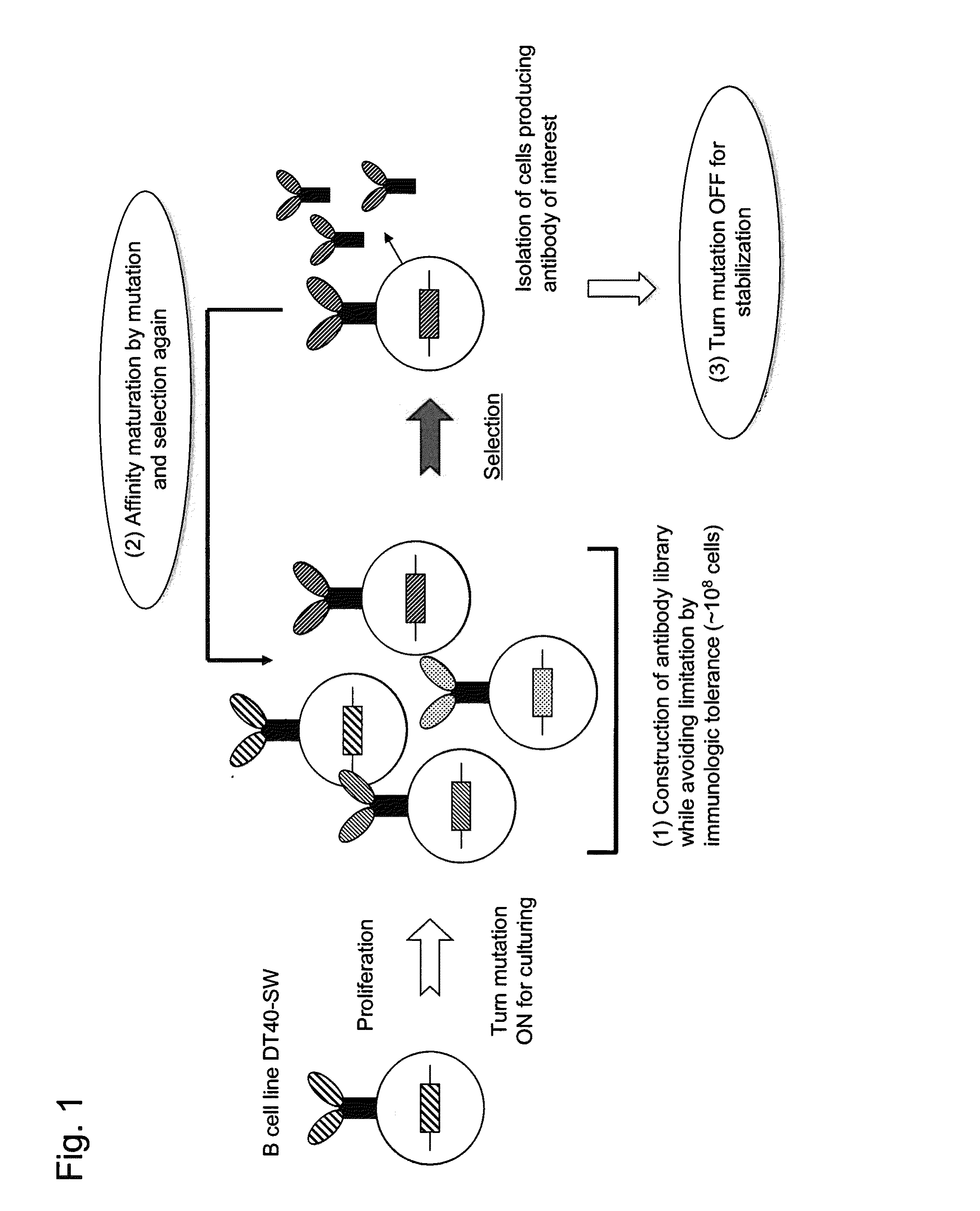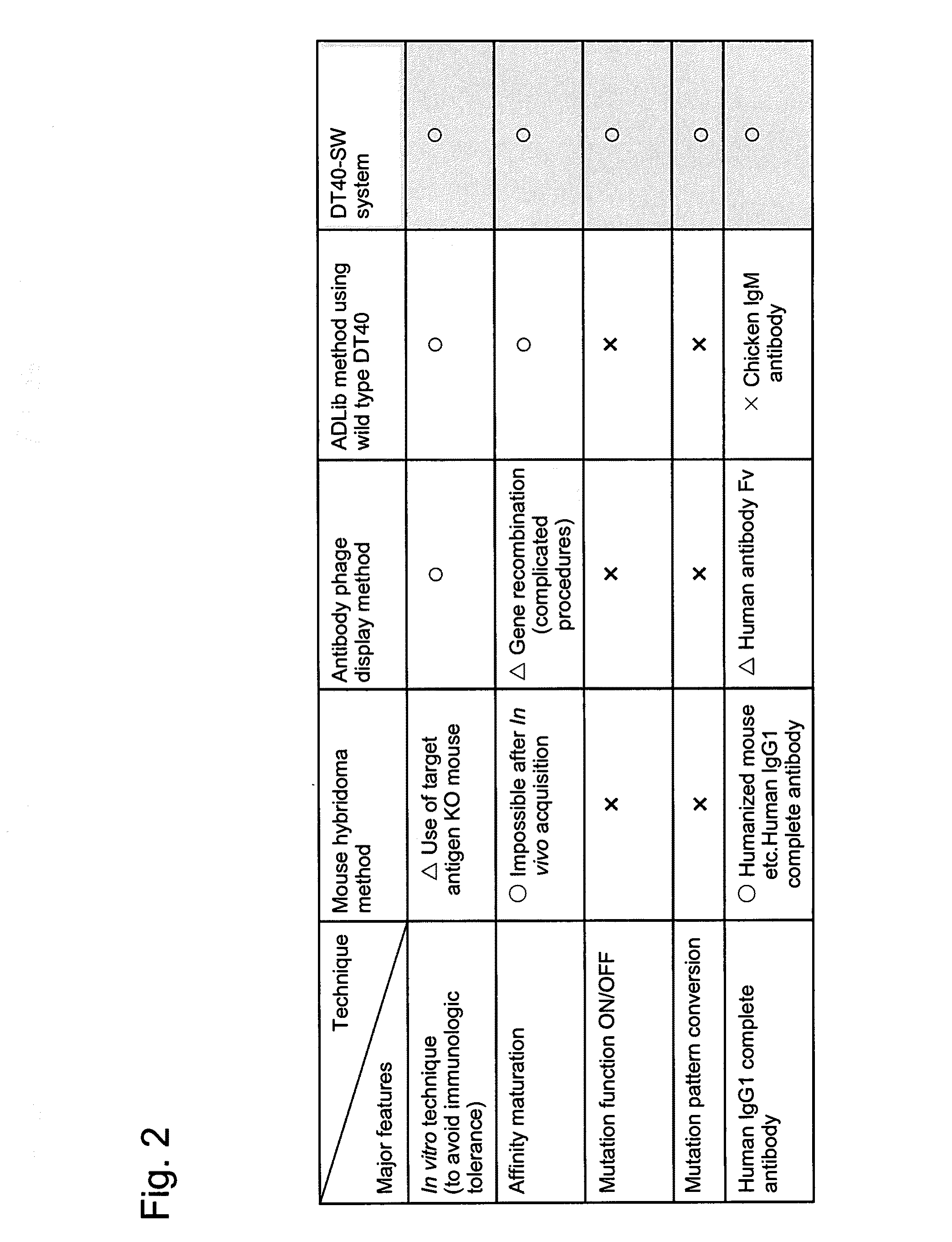Method for preparing b cell which produces human-type antibody
- Summary
- Abstract
- Description
- Claims
- Application Information
AI Technical Summary
Benefits of technology
Problems solved by technology
Method used
Image
Examples
examples
[0086]The present invention is specifically described with reference to the following Examples, but is not limited to these Examples.
(A) Substitution of Chicken Antibody Light Chain Constant Region Gene with Human Antibody κ Chain Constant Region Gene
1) Construction of Human κ Chain Constant Region Gene Targeting Vector
[0087]A method for substituting a chicken light chain constant region with a human κ chain constant region according to the outline shown in FIG. 6 is shown in FIG. 7. Upon construction of a targeting vector, the following points were particularly devised in addition to the above items: (i) a targeting arm vas designed so as not to alter and / or delete a matrix attachment region (MAR) or a 3′ enhancer (3′ E), which are factors involved in gene expression and mutagenesis; (ii) a fragment containing the human κ chain constant region (Cκ) gene to be incorporated into the vector contained a splicing acceptor sequence and a branch point sequence in an intron in a upstream p...
PUM
 Login to View More
Login to View More Abstract
Description
Claims
Application Information
 Login to View More
Login to View More - R&D
- Intellectual Property
- Life Sciences
- Materials
- Tech Scout
- Unparalleled Data Quality
- Higher Quality Content
- 60% Fewer Hallucinations
Browse by: Latest US Patents, China's latest patents, Technical Efficacy Thesaurus, Application Domain, Technology Topic, Popular Technical Reports.
© 2025 PatSnap. All rights reserved.Legal|Privacy policy|Modern Slavery Act Transparency Statement|Sitemap|About US| Contact US: help@patsnap.com



